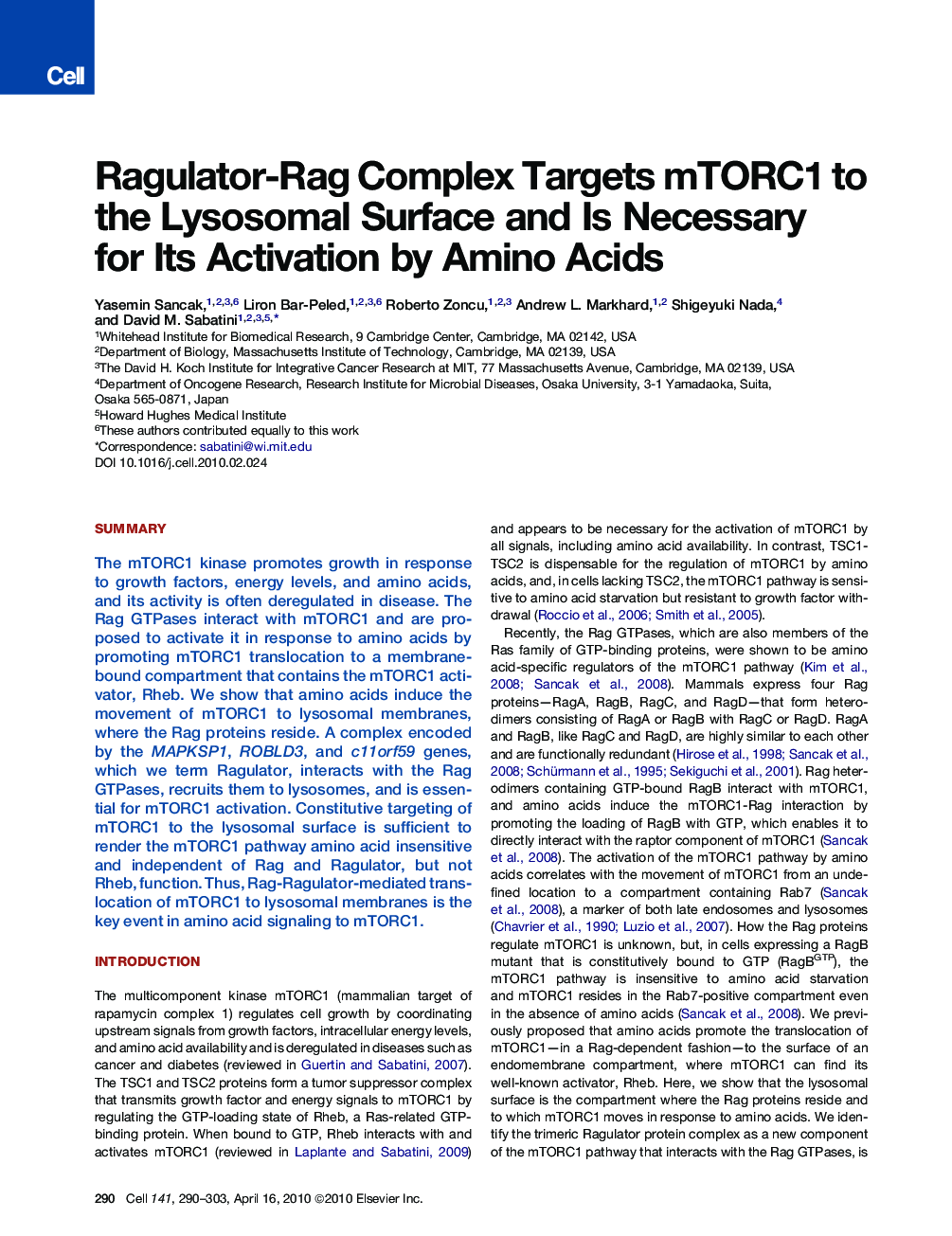| Article ID | Journal | Published Year | Pages | File Type |
|---|---|---|---|---|
| 2036900 | Cell | 2010 | 14 Pages |
SummaryThe mTORC1 kinase promotes growth in response to growth factors, energy levels, and amino acids, and its activity is often deregulated in disease. The Rag GTPases interact with mTORC1 and are proposed to activate it in response to amino acids by promoting mTORC1 translocation to a membrane-bound compartment that contains the mTORC1 activator, Rheb. We show that amino acids induce the movement of mTORC1 to lysosomal membranes, where the Rag proteins reside. A complex encoded by the MAPKSP1, ROBLD3, and c11orf59 genes, which we term Ragulator, interacts with the Rag GTPases, recruits them to lysosomes, and is essential for mTORC1 activation. Constitutive targeting of mTORC1 to the lysosomal surface is sufficient to render the mTORC1 pathway amino acid insensitive and independent of Rag and Ragulator, but not Rheb, function. Thus, Rag-Ragulator-mediated translocation of mTORC1 to lysosomal membranes is the key event in amino acid signaling to mTORC1.
Graphical AbstractFigure optionsDownload full-size imageDownload high-quality image (244 K)Download as PowerPoint slideHighlights► Amino acids induce the translocation of mTORC1 to the lysosomal surface ► The lysosomal membrane-associated Ragulator complex interacts with Rag GTPases ► Ragulator is necessary for TORC1 activation by amino acids ► Targeting of mTORC1 to the lysosomal surface eliminates its amino acid sensitivity
